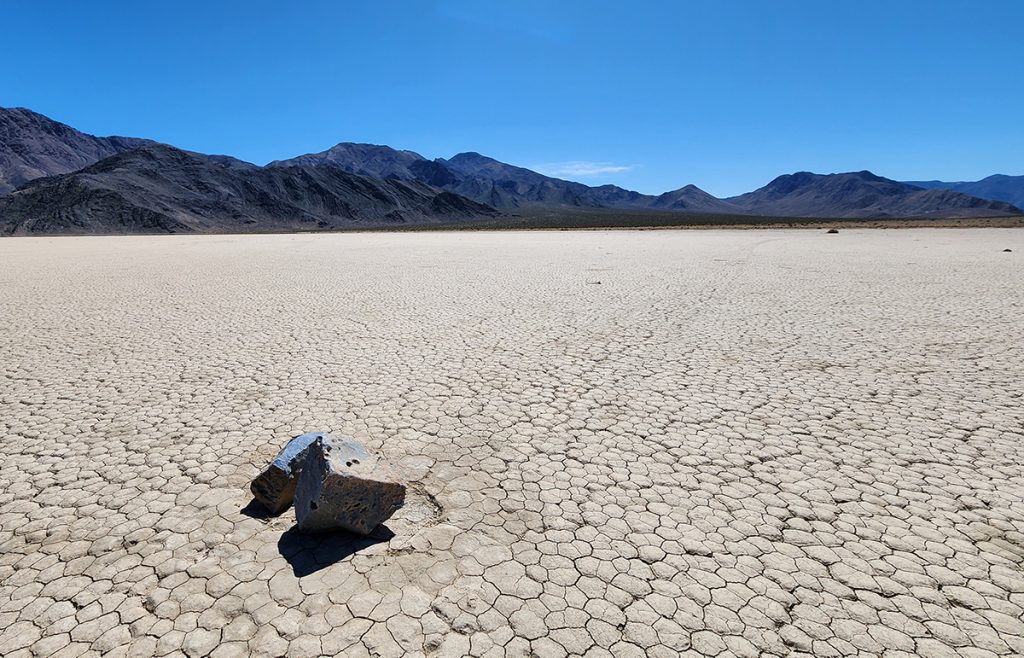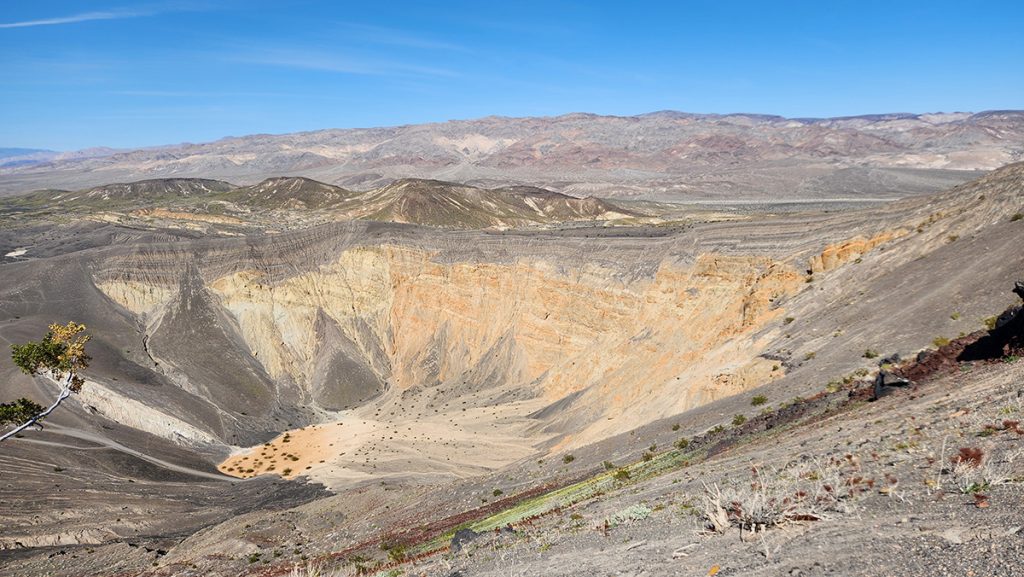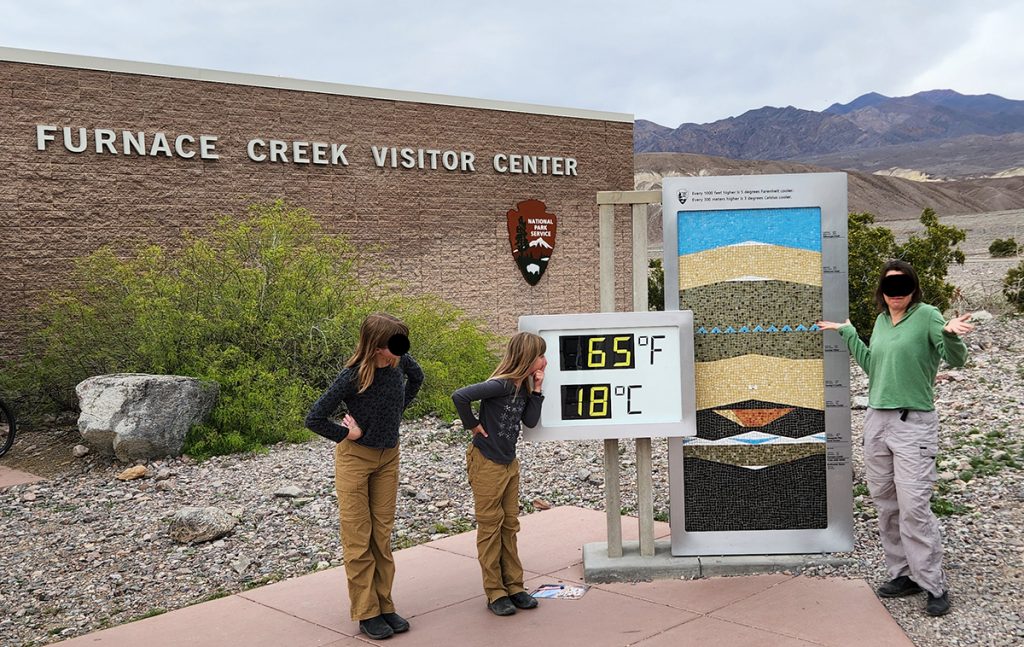The next day we decided to head to “The Racetrack”. This is where the rocks move on their own and lave tracks behind them. I had heard about this before and wanted to see it if we could. What I didn’t realize was that it was a drive to get there. First it was about an hour on paved roads, and then about 1.5 hours down a dirt road that was rated as high-clearance and make sure you have a full size spare. I felt the road wasn’t too bad. It was certainly not for a passenger vehicle, but I didn’t feel that our 4runner had any issues at all and the driving was fairly easy. When we got the the racetrack as it is called we wandered out to the playa and looked for the rocks, and didn’t see any. We read they were toward the south end of the area so we started walking, and saw some rocks, but no real tracks there and there weren’t that many of them. I was getting pretty disappointed about dragging my family all the way out to this spot that wasn’t that picturesque, and there weren’t any moving rocks. We headed back to the car, and we decided to drive to the end of the playa and see if there was anything down there. Once we got there we saw more rocks out on the playa, but I wasn’t getting my hopes up. Well, I was wrong thankfully. We got out there and you could see the “tracks” the rocks had left from moving across the playa. It was really cool. As we walked around more we could catch the light right and easily follow where the rocks came from and where they were going.
Now you may be asking yourself how rocks move on their own. Well, it wasn’t figured out until 2013-2014 after some scientist (the Norris brothers) figured it out. What happens is that when water collects in the area and it then freezes it “lifts” the rocks slightly. Then when the ice starts to just melt under the ice, and if the wind is blowing enough, the rocks can move across the playa and they leave tracks behind them. They can move a couple centimeters in a day or a meter or so. It all depends on the conditions. And sometimes there is no chance for years in the rock locations. It was REALLY neat.

My spirits were lifted at that point, and we headed out happy. Once we made it back to the paved road we hiked the Ubehebe crater loop. It takes you around a cinder cone. That was nice, but boy was it windy.

Then we stopped at a closed ranger station that had open bathrooms and there was a scientist there who was so excited about what she was getting that she just had to tell us. She had just downloaded data from last August (2023) about rain information at the north end of the park. In a 2 day period that rain gauge received 108.2cm of rain. That was one of the highest totals ever at Death Valley. She said we were the first people to know that information (besides her of course). We were glad we were there for her to tell, she looked like she was going to pop with excitement. Then we drove back toward the campsite. We hit a historic site about the borax mining that took place in DV from 1883-1888. It was interesting. Then back to camp, another nice dinner, s’mores, and more stars.
And here are my ladies at the famous sign showing the temperature. I guess it wasn’t that warm there. This was one of the afternoons we were there.
